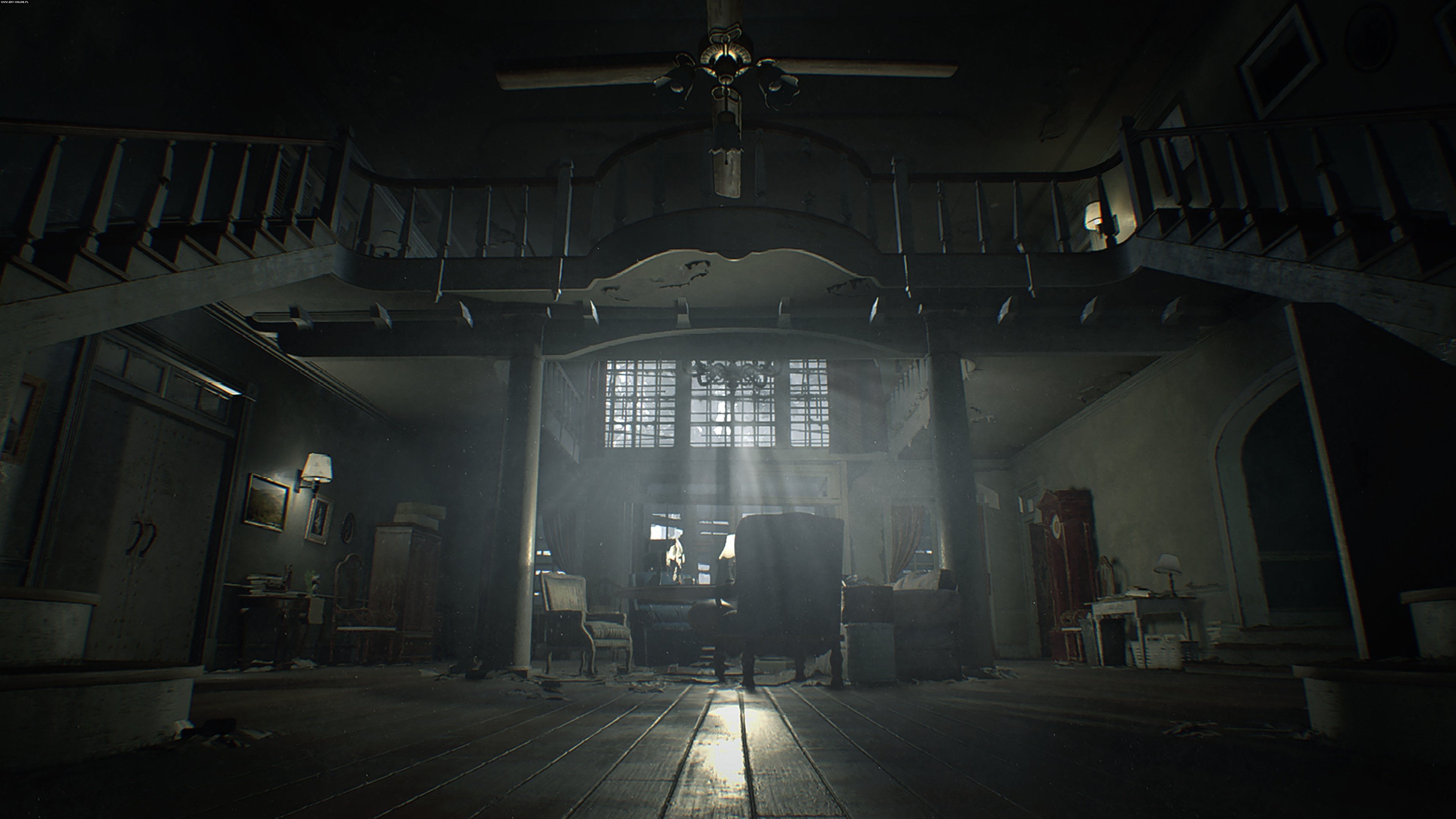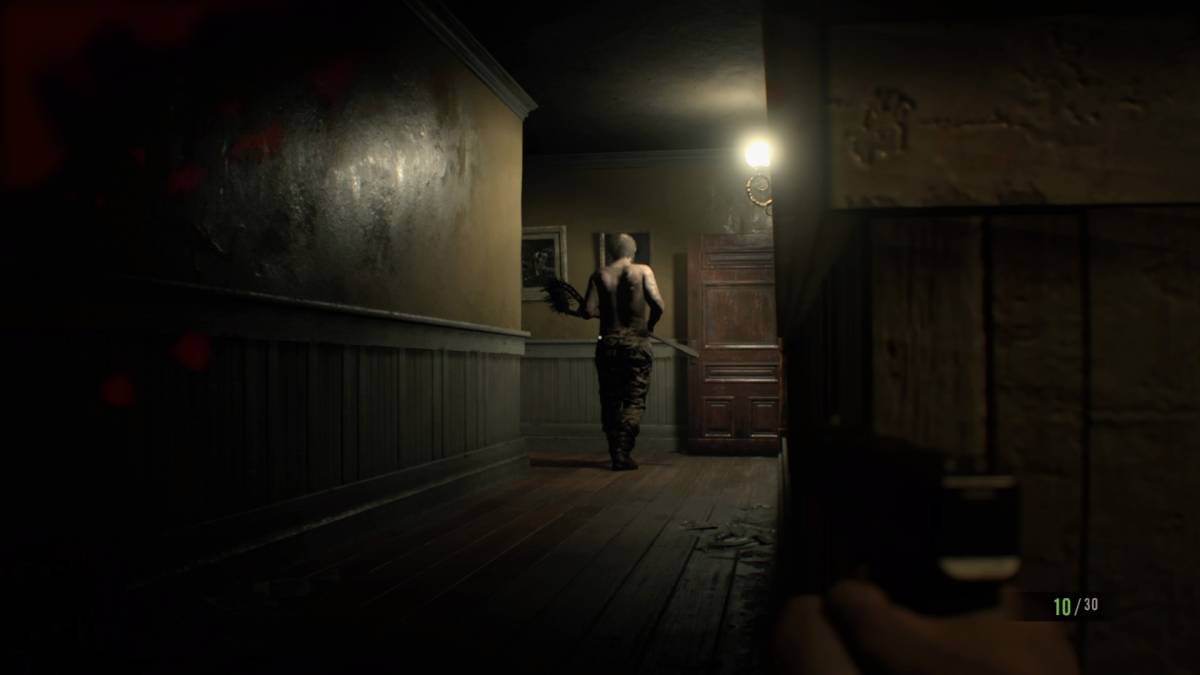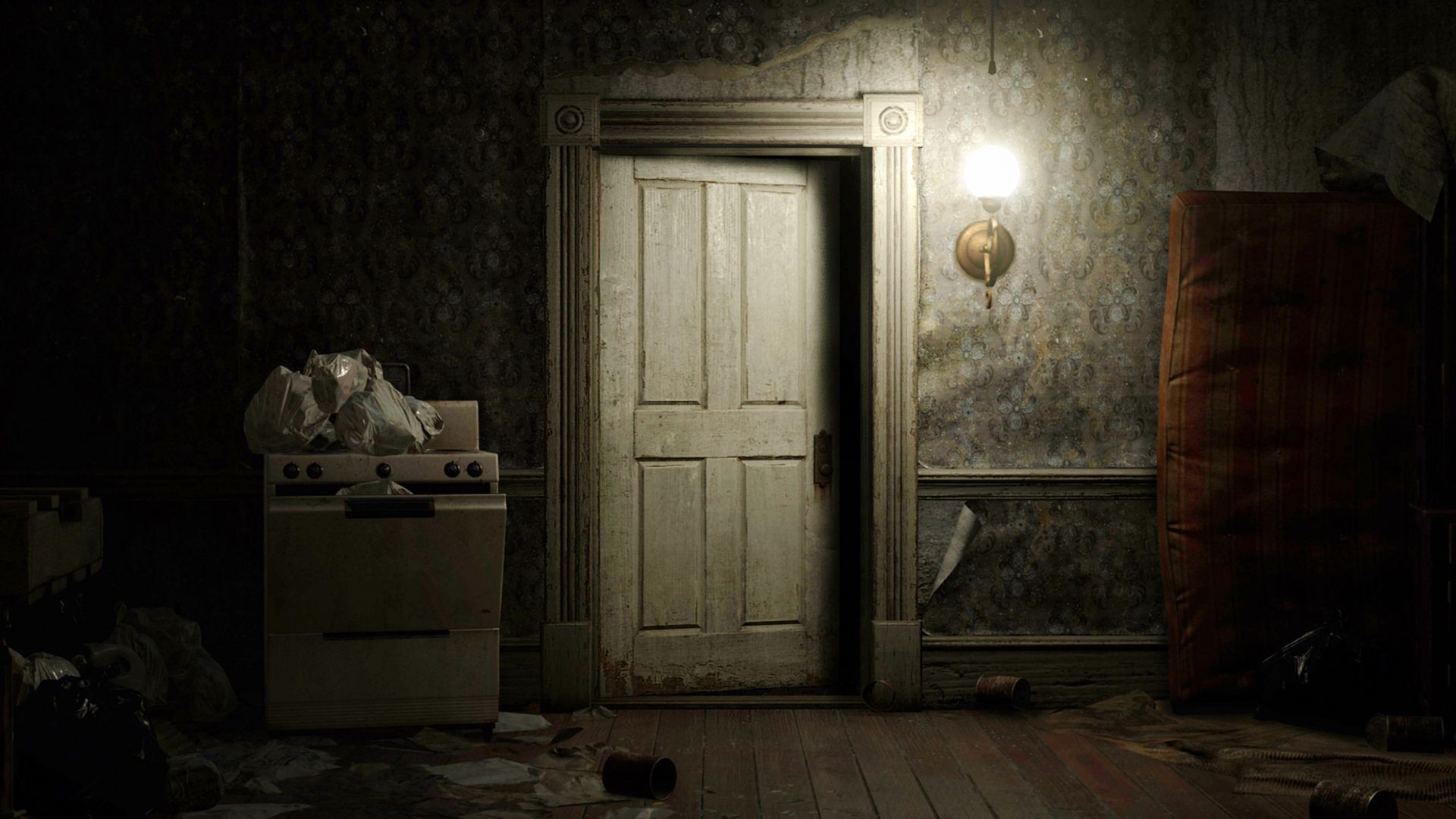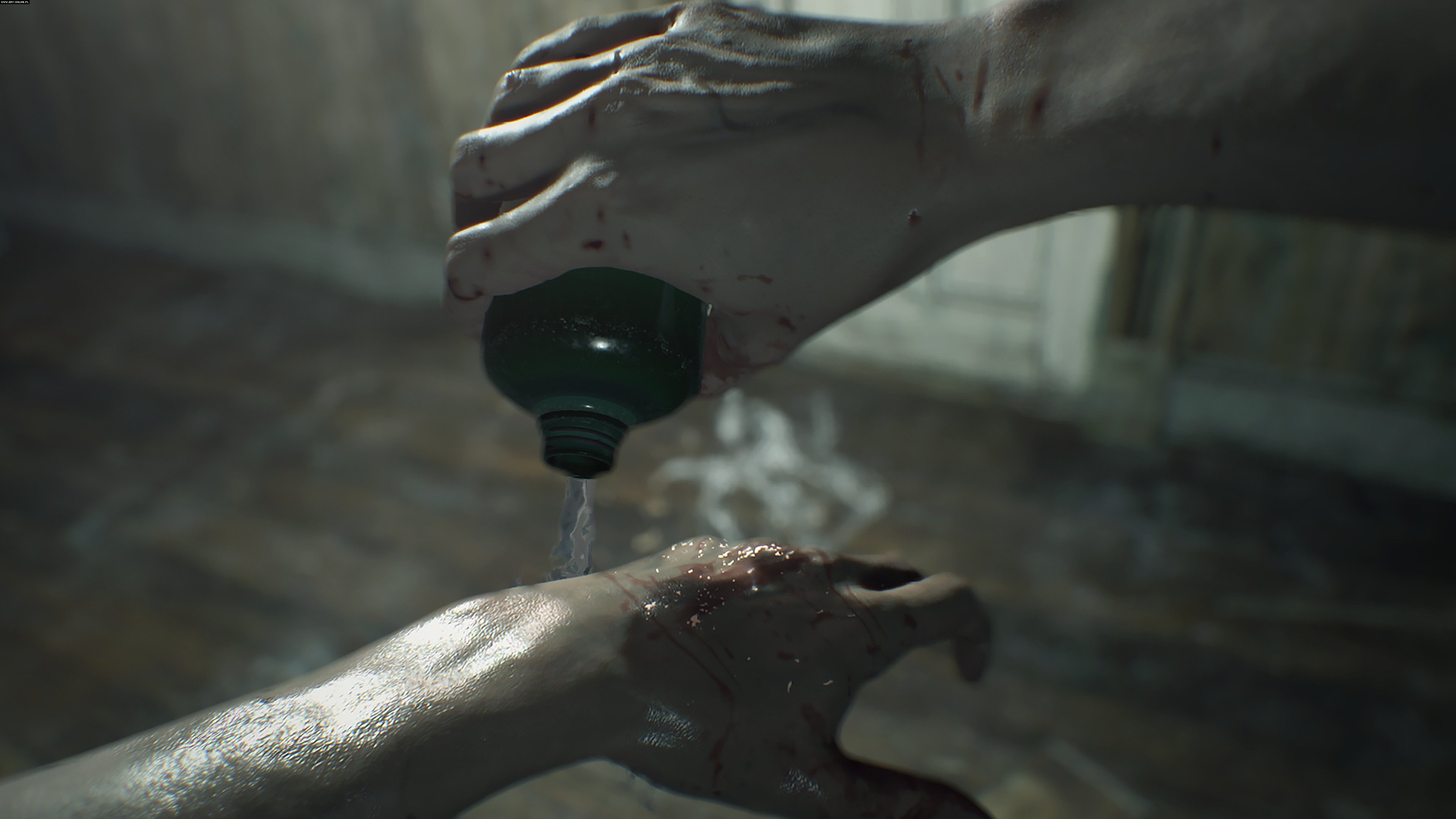Platforms:
Xbox One, PS4, PC
Released:
January 24, 2017
Publisher:
Capcom
Developer:
Capcom
Resident Evil VII: Biohazard is a smart re-imagining of a franchise that far too often has rested on its laurels in recent years. Replacing camp acting and comic-book villains with slow-burn malicious antagonists and swapping out hordes of the undead for a more intimate threat, the change of pace was at first strange for this long-time fan, but ultimately very welcome. Despite the obvious changes, the game is still at its core a Resident Evil game, and while it doesn’t always gel together for a flawless experience, it doesn’t stop it from being the most effectively scary game in the series for a very long time.

The story is basic but sets up the premise well enough; your missing wife contacts you and asks you to come and find her in a creepy house in the woods. Once there, things aren’t what they seem, as you cross paths with the cannibalistic Baker family and try to escape from the horrors within. The most immediate change to your expectations is the first person perspective, very different from the fixed camera angles or third person view from previous Res Evils and bringing it into line with a lot of modern horror interpretations.
Survival is the focus of this survival horror. At no point during the game did I ever feel overpowered or like I had too many choices of weapon; quite the opposite. The old system of inventory management adds more to the tension while never being so imbalanced that it’s frustrating. I was constantly trying to combine items and create new ones using the games simple and clever crafting system so that I would have room for other herbs or ammo that I may find lying around.

Once you’re through the opening, the house opens up to a familiar feeling; different types of doors are locked, in need of a specific key to enter them. Puzzles based around positioning and weight are scattered across different rooms, missing pivotal pieces to make them complete. You see a shotgun that you know will come in very handy but is just out of reach and you know you’ll need to come back for it later. Creating a map in your mind of where all of these elements fall into place is something that the series is known for and it’s capitalised upon here, not just to be cheeky, but because it is a cliché that actually works. You need to solve your way out of here while potentially being stalked and attacked at every turn. It’s excellent.
Resident Evil VII is so successful not because of its known gameplay tropes laid out by its action-packed history, rather its ability to strip everything back to its bare minimum to create a truly nerve-racking setting, where every dark doorway, every stairwell and every ominous corridor could contain something frightening. Even as some of the enemies become more obvious, the manner in which they appear is still often surprising, meaning you never truly feel safe, with plenty of visual tricks and smart use of sound effects always keeping you on your toes.
“…a true feeling of dread that this is not going to end well.”
You’ll find video tapes on your journey that serve as playable flashbacks, further deepening the story of the Baker house and alluding to an even deeper evil. While infrequent, they offer a refreshing change of pace and for those who are paying attention, have a direct impact on the present day. They also create a horrible sense of foreboding when you revisit areas that you recall had something awful happen when you were there in a flashback; a true feeling of dread that this is not going to end well.
Pacing is deliberately slow, even when sprinting, so that you’re forced to take in everything around you. This is perfectly understandable, but forces combat to be sometimes a little bit lethargic. Even when running from one of your stalking foes, they easily catch up with you and grab you, while other enemies that you encounter later in the game are able to literally leap at you and sometimes move towards you at twice the speed. This leaves you very vulnerable, which you could argue is the whole point, but it often irritated me that I couldn’t move quickly. I mean, if someone was chasing me down trying to kill me, I’d like to think I’d move a bit faster than I was allowed to here.

Boss battles also feel less effective, due to their repetitive nature. Often times I found myself unloading full clips of ammo (which are a precious resource) when there was actually an alternative solution that I had to trigger in the environment to actually progress. One enemy in particular seems indestructible no matter how many times you defeat them, which had me annoyed that I’d wasted valuable items on surviving them previously.
That all being said, the combat in Resident Evil VII is still incredibly satisfying when you do encounter one of the more disposable foes. Blasting a shotgun to the head and watching it pop and ooze is just great, as is lighting them on fire with the flame-thrower and seeing them burn. I do wish there was more variety in the enemies themselves, but they still provide quite a challenge when they are in groups, backing you into a corner and having you make snap-decisions about the very small amounts of ammo you have in your arsenal. Should I use the bullets I have? Do I just use my knife? Should I run instead? These questions constantly keep you questioning your tactics.
“…making you more connected to the dilapidated gross nightmare that surrounds you.”
It’s all made even more impactful by the photo-realistic graphics, making every dark room and item you find show off with incredible detail. To make a game so scary yet so gorgeous is an impressive feat, making you feel even more connected to the dilapidated gross nightmare that surrounds you. Sound effects are also top notch, with every creak, every squelch and every bump in the night distinct from one another in the creepiest way.
A huge draw-card for Resident Evil VII is the fact that, if you wish, the entire game can be played using the PlayStation VR. This heightens things in only a way virtual reality can; there’s nothing quite like hearing a noise to the left of you and slowly forcing yourself to physically turn your head. The jump scares work better and the feeling of dread is ridiculously intense; I found myself genuinely yelling and reacting to my surroundings in a way that I haven’t experienced with horror before. It had me, truly, anxious about continuing my journey.

It’s a shame that the limitations of the hardware means that you’ll be missing out on a lot of visual detail by playing it entirely in the headset, but otherwise it’s the most effective VR experience I’ve played so far and didn’t even make me feel nauseated during hour-long play sessions, due to the smart incremental movements required to turn your character around and the slower, more methodical pacing.
Positive:
- Genuinely frightening
- Sense of dread is brilliant
- Gorgeous visuals
- Best VR experience to date
Negative:
- Pace too slow for combat
- Boss battles aren't the best
In its heyday, Resident Evil was one of the pioneers of horror. It reinvented itself with Resident Evil 4 twelve years ago and it has done it again with Resident Evil VII: Biohazard. Some fans may question the lack of zombies and chaos that Raccoon City used to provide, but the deliberate slow-burn on display makes a game that is the scariest that the franchise has ever been, creating an overwhelming feeling of helplessness, isolation and vulnerability. It’s imperfect but sets up a bold new direction for the mature franchise, proving once again that it remains the top dog when it comes to scaring the hell out of you.

















